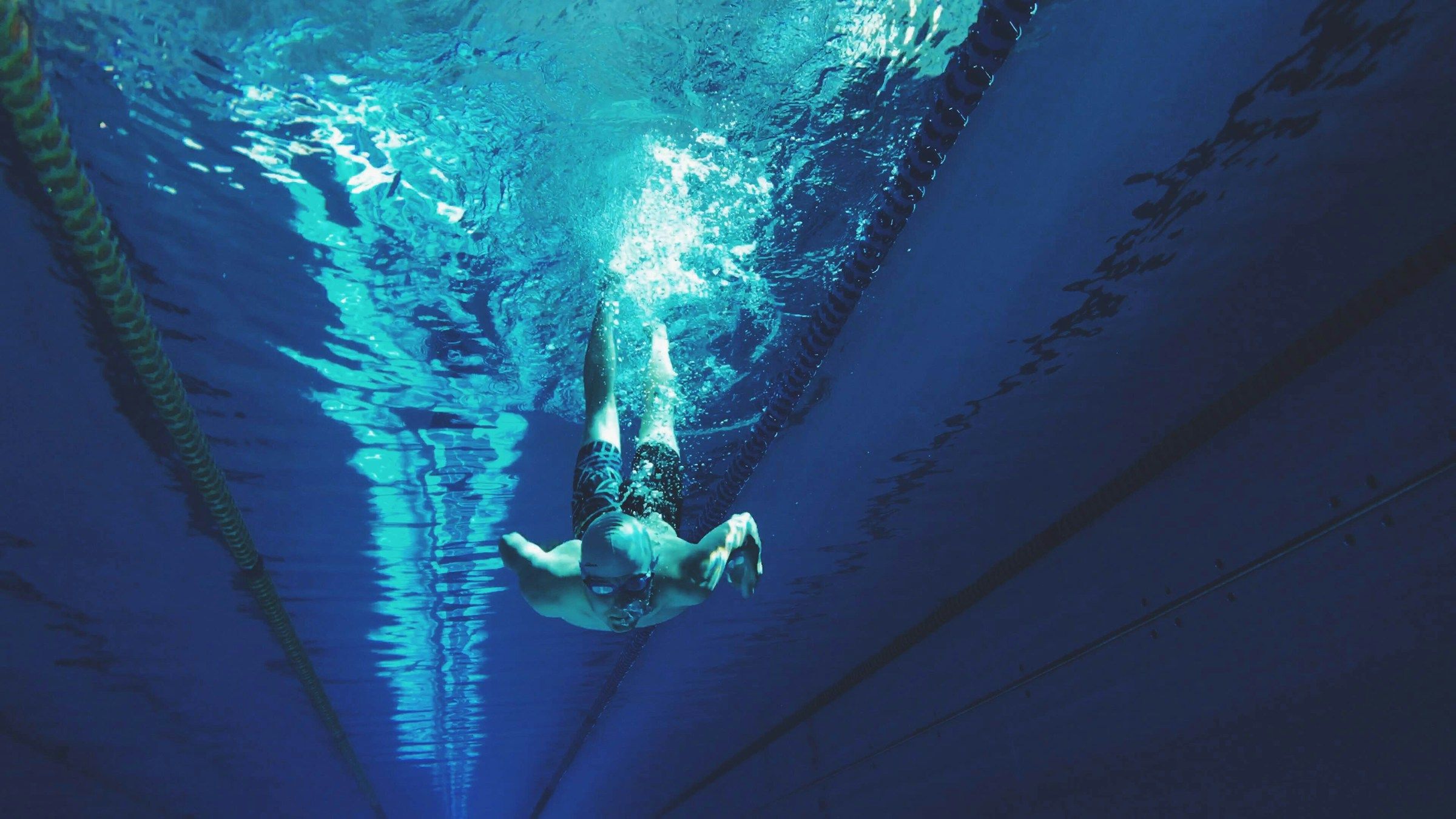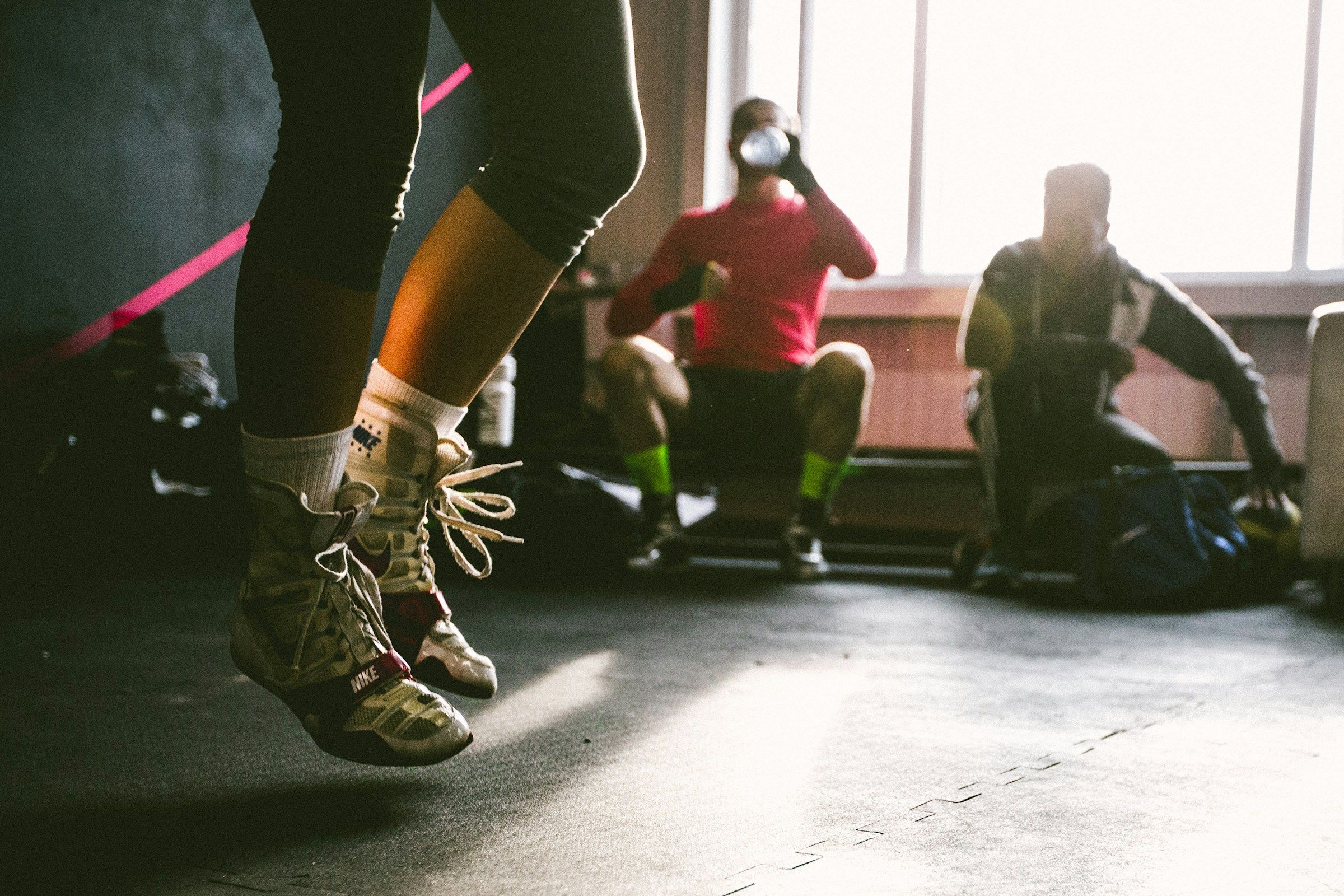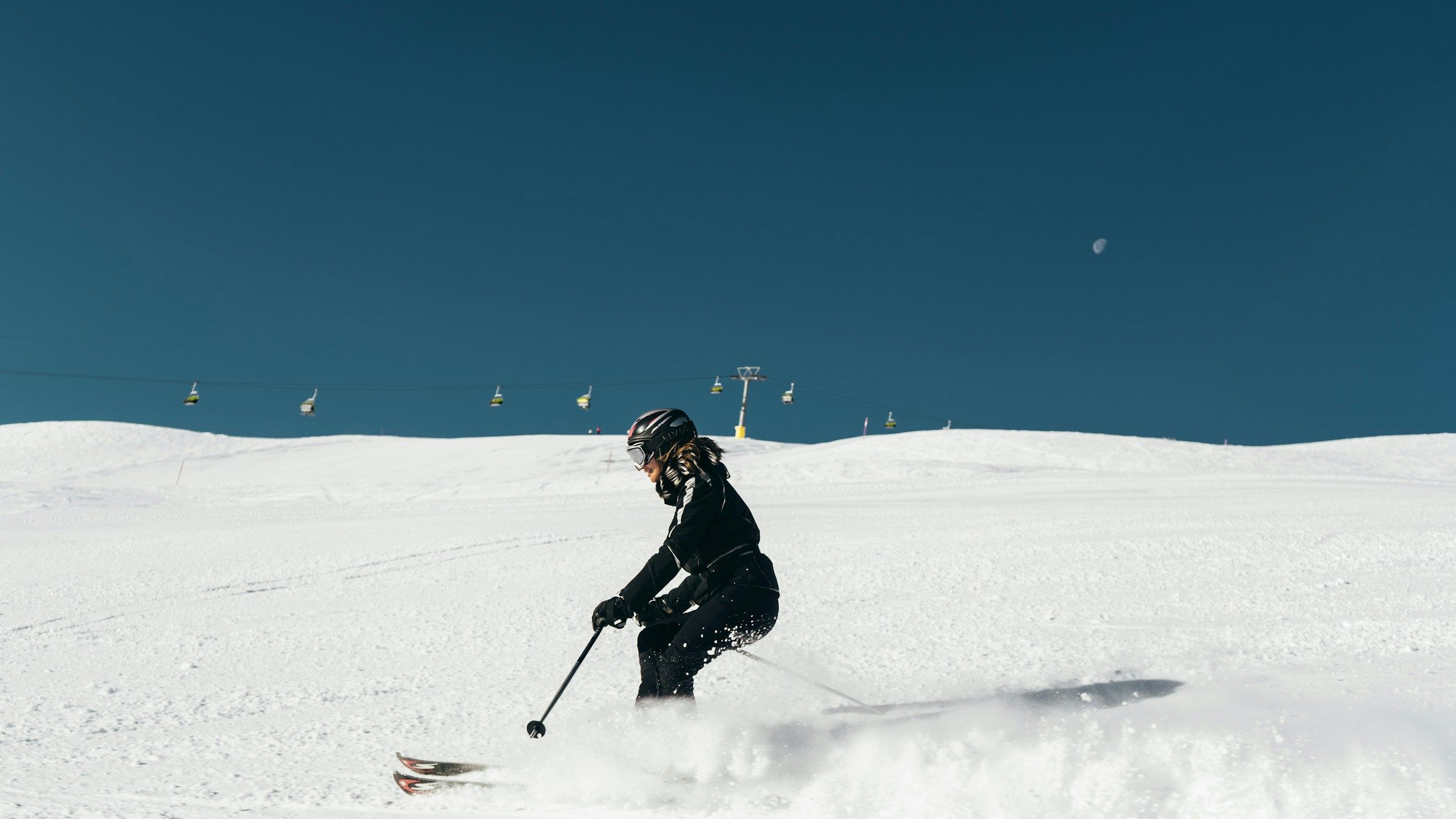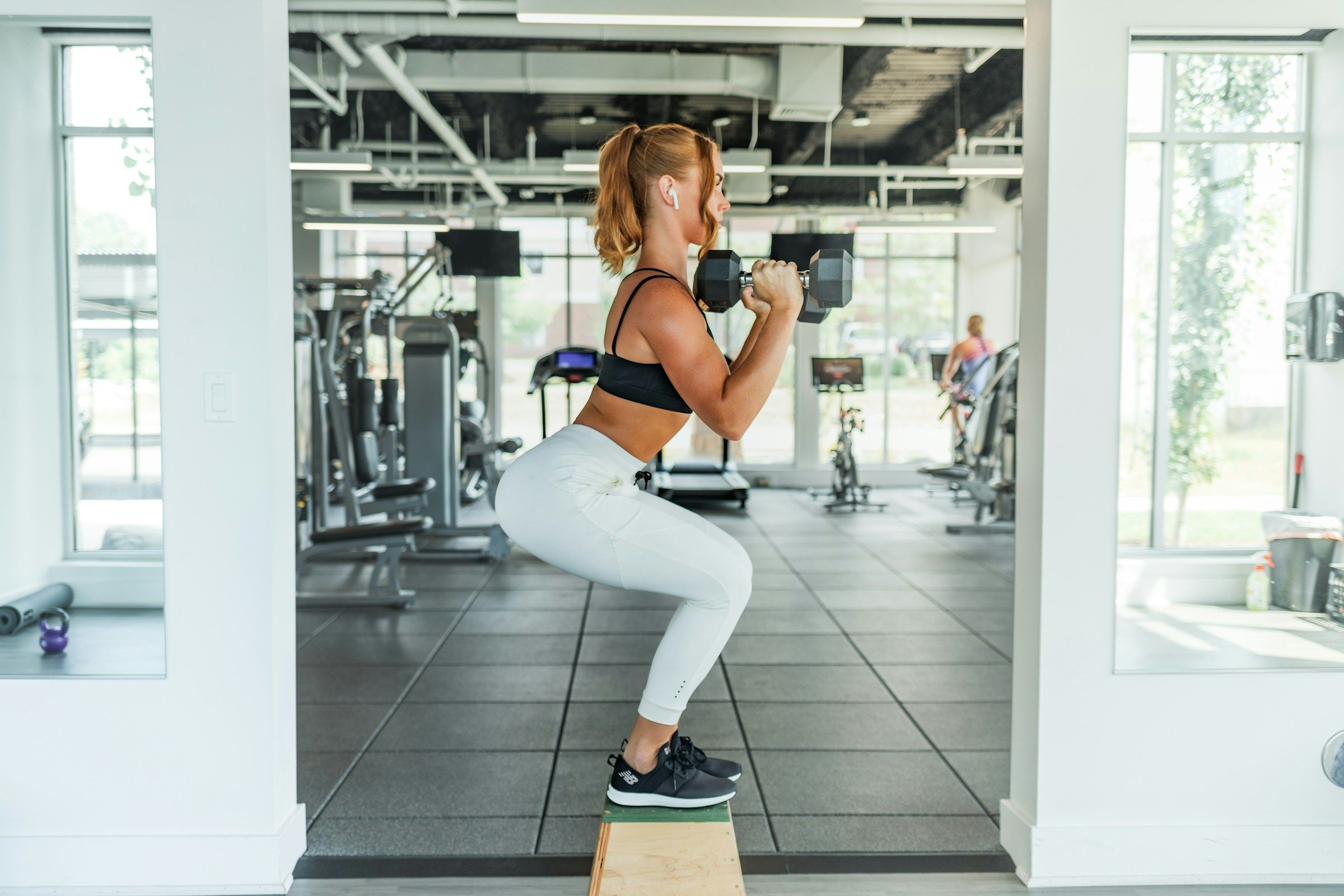Whether you want to lose weight, tone up, or get fit, counting calories can help you achieve your goals. If you’re like most people, you should find ways to make this process easier and more enjoyable. Swimming is a fantastic way to mix up your routine and stay calm. But before diving in, you may wonder: How many calories does swimming burn? This blog will answer this question and provide tips to help you increase calorie burn for improved fitness and weight loss results. We will also touch upon the best app to count macros.
Goldi AI’s calorie tracker can help you understand how many calories swimming burns and learn practical tips to increase that calorie burn for improved fitness and weight loss results.
Does Swimming Burn Calories?
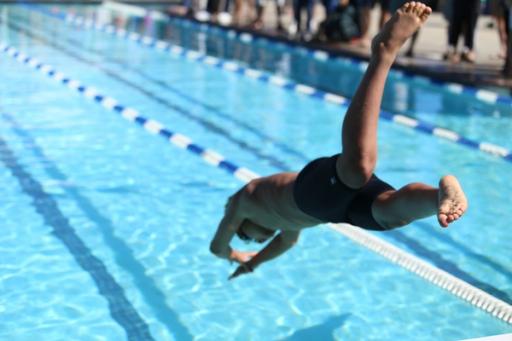
If you’re not a triathlete or competitive swimmer, swimming laps may not be the first thing that comes to mind when considering cardio. But jumping into a pool is a worthwhile workout to mix up your routine.
Pulling yourself through the water can strengthen your entire body—and the calories burned swimming quickly add up.
Heart Health
“Although swimming sometimes seems relatively hard and scary, it’s one of the best cardiovascular workouts anyone of any age can do,” says Kris Gagne, a registered and certified swim coach with USA Swimming and the American Swimming Coaches Association.
As you continually use just about every muscle to move your body from one end of the pool to the other, “the aerobic work helps strengthen the heart muscle itself, making it more efficient at pumping blood throughout your body,” he explains.
Not Your Average Calorie Burn: Swimming Engages Your Muscles and Burns Serious Calories
Like any physical activity, swimming burns calories by engaging the muscles and increasing energy expenditure. Swimming is an effective exercise because it requires the body to work against water resistance, leading to calorie burn. The number of calories burned swimming varies based on the intensity, duration, and individual factors such as weight and metabolism.
Get All the Benefits of Swimming: No Impact on Joints
What’s more, swimming, which puts pretty much no pressure on your bones and joints, is a low-impact way to burn calories. “The water supports 90 percent of your body,” Gagne explains.
If you still need to sell donning goggles, let me remind you of swimming’s spectacular benefits.
It’s a Great Cardio Exercise That Helps Prevent Heart Disease
Swimming is an excellent form of cardio since you’re challenging your heart and lungs to pump oxygen-containing blood throughout your system to keep you moving. You’re always going to be out of breath after a good session.
In the long run, a swimming habit makes a significant difference: “Studies with the American Heart Association have found that just 30 minutes of swimming a day can reduce coronary heart disease in women by 30 to 40 percent,” says Gagne.
Swimming Tones Your Muscles and Builds Strength
Because you have to overcome the resistance of the water when you swim, every stroke helps to build strength in your muscles, says Gagne. Moving your body through the water requires all of your major muscle groups, from your arms to your legs to your core, to get working.
You Can Get Variety Within Your Swimming Workouts
Gagne adds that incorporating different swimming strokes allows you to work your muscles differently within a single workout. These strokes include:
- Breaststroke
- Backstroke
- Butterfly
- Sidestroke
- Freestyle
How Many Calories Does Swimming Burn?
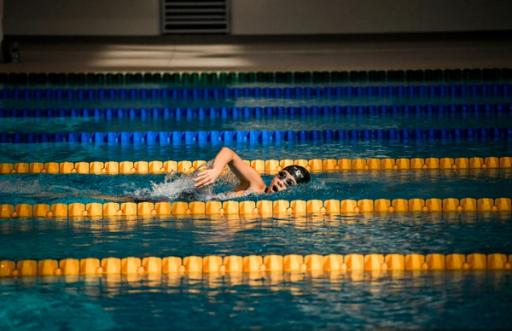
Swimming is a fun way to:
- Burn calories
- Manage weight
- Reduce stress
Calorie Factors
The number of calories you burn varies based on factors like your:
- Body weight
- Wwim speed
- Stroke
Scientists use the MET, or metabolic equivalent, to calculate calorie burn, which measures how hard your body works relative to rest.
Stroke Burn
While swimming, your body burns:
- 3.5 METs (223 calories per hour) treading water at a moderate effort
- 8.3 METs (528 calories per hour) for a medium-speed, vigorous-effort crawl
- 13.8 METs (878 calories per hour) for butterfly stroke. (These estimates are for a 140-pound adult.)
For comparison’s sake:
- Jogging would amount to 7 METs (446 calories per hour)
- Bicycling would require 7.5 METs (477 calories per hour)
Weight & Intensity
The METs and calorie burn for these activities vary based on intensity, too.
Harvard Medical School estimates that in 30 minutes of recreational swimming:
- A 125-pound [57kg] woman will burn about 180 calories
- A 155-pound [70 kg] woman will burn about 216 calories
- A 185-pound [83 kg] woman will burn about 252 calories
Stroke Impact
If you turn up the heat and vigorously swim laps for 30 minutes, your calorie burn increases. In this case:
- A 125-pound [57kg] woman will burn about 300 calories
- A155-pound [70kg] woman will burn about 372 calories
- A 185-pound [83kg] woman will burn about 444 calories
The stroke you select also dramatically impacts how many calories you torch. While a 155-pound [70kg] woman burns about 372 calories in 30 minutes of swimming breaststroke, she’ll burn closer to 409 calories in 30 minutes of butterfly.
What Factors Into Your Calories Burned While Swimming?
A number of variables affect how many calories you burn swimming. Body weight, swim speed, and stroke type all play a role.
Your body:
Someone who weighs more will expend more calories than someone who weighs less because it takes more energy to move a larger body than a smaller one. (Which, yes, is considered in the METs formula.)
Speed & Drag
A larger body will also create more surface area in the water, thus creating more drag resistance. More drag means it takes more energy to push through the resistance, increasing the heart rate and higher caloric expenditure.
Your swim speed:
How fast you move through the water also affects the number of calories you burn while swimming. “The slower you swim, the less energy output there is, resulting in less calories burned,” says Beldini.
Stroke & Gear
The faster you swim, the more energy you use. Swimming devices such as pull buoys, pull paddles, parachutes, and bands to increase resistance or drag will also increase your energy output, upping your calorie burn.
Your swim stroke:
And then, of course, the stroke you use factors into calories burned while swimming. “Butterfly is probably the hardest and most technical stroke,” says Baxter, which is why it burns the most calories.
Stroke Effort
When you’re doing the stroke, you’re simultaneously performing a dolphin kick, and your arms are coming fully overhead, which calls for serious, total-body muscle engagement (especially in your core and upper back), she says.
A crawl is next in line for the number of calories burned swimming. “Every time you perform a stroke, you’re also kicking! says Baxter.
Stroke Ranking
“That’s the perfect mixture for burning major calories.” Breaststroke and backstroke are about equal in terms of caloric outcome. “These two are slower strokes, but you can still burn calories with proper technique,” she says.
How Does Each Stroke Compare?
You might be wondering how many calories each stroke burns. Below are some estimates of the number of calories burned while swimming in each type of stroke. (Estimates are based on a 140-pound adult.
Check out other swim stroke and speed MET estimates here and use this swimming calorie calculator to find your calorie burn.)
- Treading water (moderate effort): 3.5 METs = 223 calories/hour
- Backstroke: 4.8 METs = 305 calories/hour
- Breaststroke: 5.3 METs = 337 calories/hour
- Freestyle or crawl (light or moderate effort): 5.8 METs = 369 calories
- Freestyle or crawl (medium to vigorous effort): 8.3 METs = 528 calories/hour
- Freestyle or crawl (fast or vigorous effort): 9.8 METs =623 calories/hour
- Butterfly: 13.8 METs = 878 calories/hour
Additional Considerations
These estimates provide a general idea of how swimming can be useful for burning calories. A moderate butterfly stroke can burn up to 748 calories per hour for a person weighing around 150 pounds, making it one of the highest-calorie-burning strokes.
How intense a certain speed or distance feels depends on your fitness level and will significantly impact the total number of calories you burn. Other aspects that affect calorie burn during swimming include:
- Body weight
- The condition of the water
- Any tools used
Weight Impact
Body Weight Harvard Medical School estimates that during 30 minutes of recreational swimming, a person assigned female at birth weighing 125 pounds burns approximately 180 calories.
Those weighing 155 pounds burn about 216 calories, and those weighing 185 pounds burn around 252 calories. Intensifying the activity to vigorous lap swimming for the same duration significantly increases calorie burn.
Water Conditions
In this case, a 125-pound person assigned female at birth will expend roughly 300 calories. A 155-pound female will use about 372 calories, and a 185-pound female will burn close to 444 calories.
Swimming Conditions It’s also worth noting that swimming in natural bodies of water like oceans, rivers, and lakes can increase calorie expenditure due to factors like current resistance and temperature, which may require your body to work harder.
Tools & Temp
Swimming in colder water also can increase calorie expenditure because your body has to work harder to maintain its core temperature. This thermogenic effect means chilly pools or open-water swims might lead to a higher calorie burn than swimming in warmer water. Swimming Tools Certain types of equipment can also impact calorie burn. Using swimming tools like fins, paddles, or kickboards affects calorie burn by increasing resistance in the water, requiring more effort to move at the same speed or cover the same distance. Adding intensity can lead to a higher calorie expenditure during the swimming session.
Do You Burn More Calories Swimming Than You Do Running or Biking?
You can burn as many (if not more) calories in the pool as you can on the bike or tread as long as you put in the effort. If you run at a 10-minute mile pace, you burn about as many calories in 30 minutes on the tread or pavement as you would in the pool, per Harvard Medical School.
Pace & Intensity
If your pace lands closer to 11-plus minutes per mile, you’ll burn more calories in the pool. It’s a similar story when it comes to swimming and cycling. Spin those wheels at a moderate pace for 30 minutes on the stationary bike, and a 155-pound [70kg] woman burns about 260 calories.
That’s almost 100 fewer calories than 30 minutes of vigorous laps. Kick up the spinning intensity to an all-out effort, though, and that same woman burns about 391 calories in 30 minutes, rivaling 30 minutes of butterfly in the pool (409 calories).
How to Use Calorie Burn Information
Understanding how many calories swimming burns is a powerful tool for creating and reaching fitness goals, such as managing weight or boosting endurance. Knowing the estimated calorie burn of different swim strokes and intensities, you can adjust your swimming routines to match your goals.
If you’re aiming for weight loss, focus on longer sessions of vigorous strokes like butterfly or freestyle to maximize calorie expenditure.
Track & Adjust
If your goal is to build up endurance, you might incorporate a variety of strokes at moderate intensity, focusing on increasing the duration of your swims over time. Online calculators and fitness trackers are useful for estimating calorie burn more accurately.
These tools often allow you to input individual factors such as weight, age, swim duration, and stroke type, so you get a more personalized estimate of your calorie expenditure and how it fits into the rest of your routine. This data can help you adjust your workouts to stay on track with your fitness goals.
How to Burn More Calories Swimming
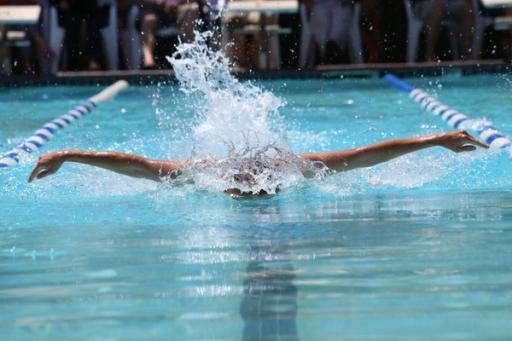
Add More Resistance to Your Swimming Routine
Creating resistance is a great way to boost your calorie burn while swimming. The more resistance you have in the water—whether using equipment or your own body—the more calories you’ll burn.
You don’t need boring, repetitive laps to create this resistance. Instead, try adding a drag suit to your next swim workout. This is a slightly loose swimsuit that you layer over your go-to Speedo. Swim pros use drag suits to build strength and endurance. You can also try out gear like hand paddles or fins.
Incorporate Interval Training
Upping your swimming speed means more calories burned, but you don’t have to sprint for 30 minutes straight to see big benefits. Whether you’re crunched for time or building up your stamina, try using interval training.
Swim as hard as you can for 30 seconds, swim leisurely for 60 seconds, then repeat. Just like HIIT on the tread, breaking up your pool workout allows you to maximize your effort and time while improving your performance and burning calories.
Challenge Yourself with Individual Medleys
Swimming IMs, or individual medleys, is another way to increase your calorie burn while swimming. An IM consists of swimming each of the four primary strokes back-to-back to switch up the stimulus on your body and, ultimately, turn up your burn.
To try this, swim one lap of butterfly, then a lap of backstroke, then a lap of breaststroke, and finally a lap of freestyle. Use the strokes that feel easiest to you as recovery, or do a few laps of leisurely breaststroke or backstroke after your IM to recover before repeating.
Track Your Calories within Less Than 15 Seconds with Our Calorie Tracker App
Goldi AI transforms calorie tracking with our cutting-edge AI technology. Just snap a photo of your meal, and we’ll do the rest. Our app combines your phone’s depth sensor with advanced AI models to:
- Analyze food volume
- Identify ingredients
- Instantly calculate calories, protein, carbs, and fat content
With 90% accuracy on visible foods and multiple tracking options, we’ve made nutrition tracking effortless. Options include:
- Barcode scanning
- Food label recognition
- Manual description for complex items like smoothies
AI Tracking
Gone are the days of tedious manual logging calorie-tracking apps. Whether scanning a full meal or a quick snack, Goldi AI gives you accurate nutritional information in under 15 seconds.
Plus, our AI learns from your feedback, continuously improving its accuracy.
Stay on track with personalized insights and smart reminders. Goldi AI makes achieving your fitness goals simpler than ever. Track your calories with your camera with Goldi AI’s AI calorie tracker today.
